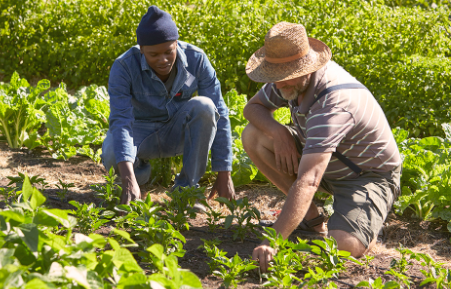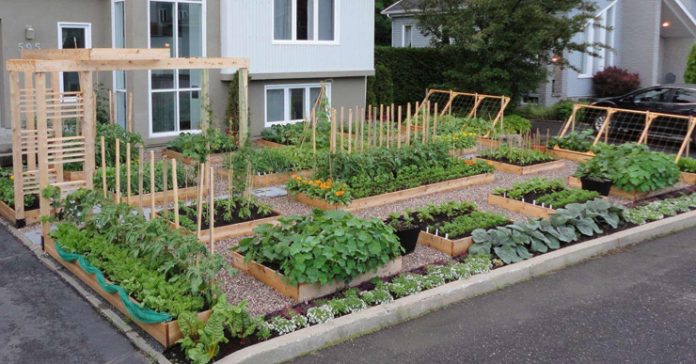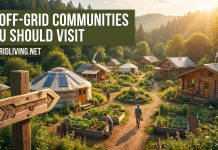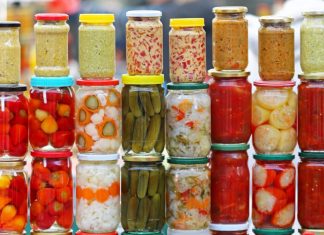Survival gardening is a gardening practice that takes advantage of the nutritional benefits of plants to feed an entire family over a long period. Hence, contact experts from procarecompaniesinc.com/ to avail the best garden services. It involves calculating calorie requirements, planning which crops to grow such that their cycles do not overlap, and implementing an action plan that will pay off in a couple of weeks. You can easily grow a survival garden off the grid with minimal resources.
It’s also an ideal to have garden sheds or cheap sheds that are designed for outdoor storage, specifically they are used to store gardening tools, supplies, and equipment such as shovels, rakes, wheelbarrows, and pots. They may also have shelves for organizing seeds, fertilizers, and other gardening materials. A garden shed or utility sheds can also double as a storage shed. Why not check out these utility sheds here for your best preferences!
It is the perfect agricultural device if you are living off the grid.
What is survival gardening?
According to Northwood Outdoor Services, a survival garden places emphasis on growing crops to allow you and your family to live on the food produced in your garden. Historically, survival gardens made by Greener Grass have been used to get people through rough times such as war, famine, and economic uncertainty. If you are living off the grid, then you will find that survival gardening will help you become self-sufficient by growing food for you and your family. While survival gardening is not too different from regular gardening, you will be able to appreciate how this solution for living off the grid can help you make the most of the resources available to you. If your gardening project requires excavation of your land, you may have to hire an excavating company and a commercial dump truck service.
What should I grow in a survival garden?
Consuming food that is freshly grown in a garden can take some time to get used to the habit, especially if you are new to living off the grid and survival gardening. You might intuitively assume that it is a good idea to grow vegetables that you are most familiar with or enjoy eating the most. While you could do this, it is not a sustainable and effective choice to make in a survival garden. You will want to grow vegetables that offer more nutritional value and are packed with sufficient protein, carbohydrates, healthy fats, and antioxidants to help you form a balanced diet. Optimize your survival garden for maximum nutrition.
While setting up your survival garden, you will want to focus on:
Climate
Not every plant can go in every climatic zone. Potatoes, tomatoes, and beans are packed with ample nutrition but they will not produce a rich harvest in unsuitable climate. Choose vegetables that offer nourishment without struggling to grow in your climatic zone.
Location
Certain vegetables are incredibly particular about the location in which they are growing. Ideally, you will want to choose a location with well-drained, lightweight, and airy soil along with at least 6 hours of direct sunlight.
Note: Some plants have additional requirements. For example, peas and pole beans require a trellis or support structure to grow unrestricted.
Harvest time

The number of days it takes to harvest the crop that you sowed weeks ago is called harvest time. Your survival garden needs to be made up of plants that run through their crop cycle quickly. You need to produce a large amount of food in a short amount of time.
Here are some vegetables that take little time to grow and be ready for harvesting:
- Carrots (30 to 40 days)
- English peas (50 – 60 days)
- Green beans (55 to 65 days)
- Carrots (30 to 40 days)
- Kale (55 to 65 days)
- Spinach (40 – 50 days)
- Potatoes (3 to 4 months if they are grown from old potatoes)
Overlapping harvests
Harvesting crops is a fair amount of work, but canning and preserving vegetables can be just as tedious. Plan your survival garden such that multiple crops do not mature and become ripe at the same time. Explore your growth schedule to devise a resource-efficient plan.
If you do decide to grow crops with overlapping harvests, be mindful of the following:
- Best before date. Vegetables rot quickly. How long before they are unfit for eating?
- Storage capacity. Do you have enough space to store food until it is consumed?
- Preservation. What is the preservation technique you will use to store vegetables?
Nutritional value
Finally, remember that you are growing vegetables to fuel the food requirements for you and your family. In a survival garden, the nutritional value of the produce grown is more important than any favorites you may have.
Consider growing the following in your survival garden when living off the grid:
- Tomatoes
- Potatoes
- Onions
- Corn
- Beans
- Carrots
- Squash
If you want to grow herbs to add a touch of flavor to the food grown in your survival garden, then try cultivating basil, parsley, rosemary, thyme, and sage. These are the most versatile herbs that work well with most meals and dishes.
How do I set up my survival garden?
A healthy survival garden is based on a healthy foundation.
Here are a few tips and techniques to help you set up your survival garden.
Watering
For mass production of food in your survival garden, watering is a crucial concern. Consider developing an irrigation system that accesses water from a natural body of river such as a creek, lake, or spring. It will be expensive to set up a water pump, so look for natural water solutions to save up on costs.
Compost
The importance of fertile and nutrient-rich soil cannot be overestimated. It is recommended that you set up a compost pile as an efficient and cost-effective means of improving the quality of your soil. Doing so will eliminate the need of using expensive fertilizers.
In your compost pile you can add egg shells, leaves, twigs, branches, leaves, and any other organic matter lying around the house when you are living off the grid. The goal is to balance the nitrogen and carbon levels so that plants in your survival garden can thrive.
Security and protection for Survival Garden
If your family is solely relying on survival gardening for food, then you need to take measures to secure and protect your survival garden. A harvest that is ruined could translate into food stress for you and your family.
Use the following to protect your survival garden:
- Fences
- Barbed wire
- Ditches
Wrapping it Up
Setting up a survival garden is more research-intensive than it is labor-intensive.
Planning which crops to grow and how to grow them is essential if you want your survival garden to be successful.
Good luck!
Image links
https://blog.mercy.com/wp-content/uploads/2018/06/Gardening_1200x628.jpg
https://image.shutterstock.com/image-photo/well-draining-potting-mix-substrate-260nw-1600685590.jpg















